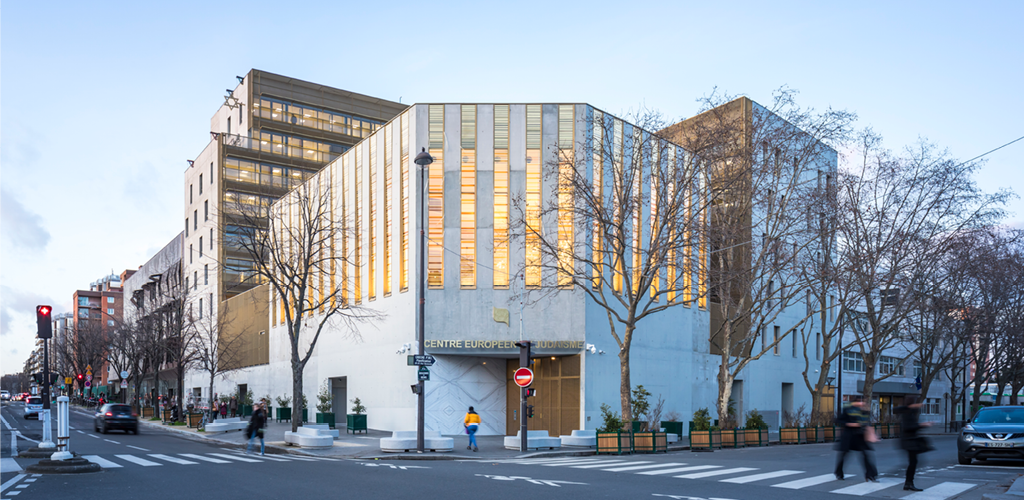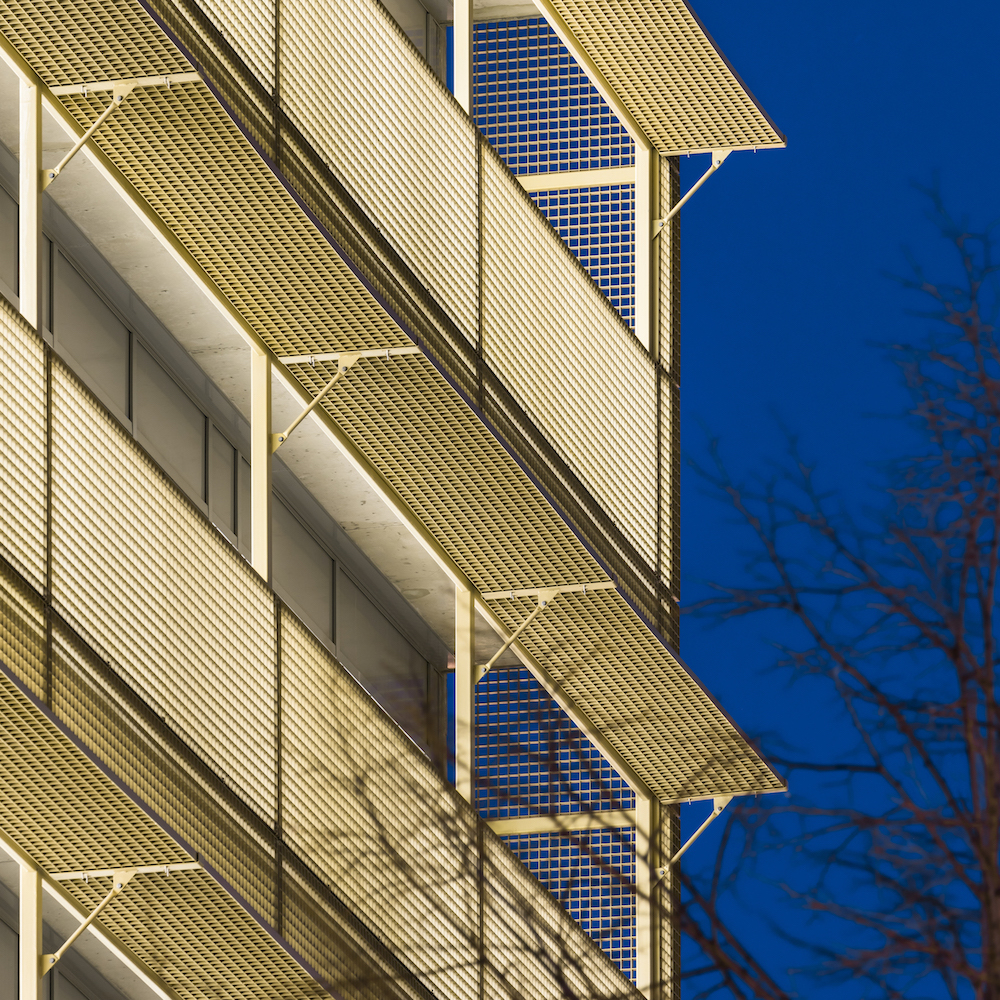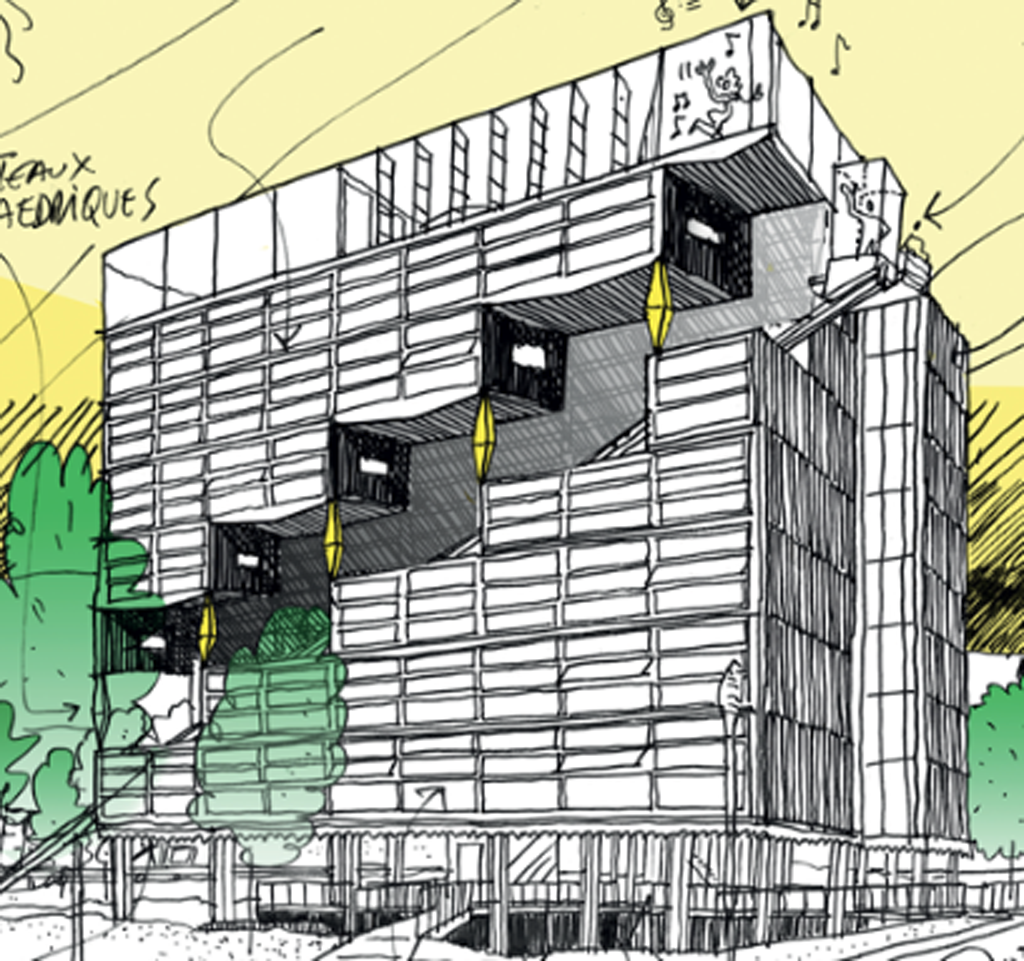Inception, with Stéphane Maupin and Bruno Fléchet
It took no less than fourteen years to raise the European Center for Judaism out of the ground. On a plot lying on the edge of Paris’s ring road, in the 17th arrondissement, sold by the City for a single euro. Fourteen years spent altering and editing their designs to meet the demands of their client, the Paris Israelite Consistory, address complex regulations and accommodate an increasingly tight budget. From a design firmly grounded in the image of the extension to the Tate Gallery in London by Herzog & de Meuron, architects Stéphane Maupin and Bruno Fléchet eventually produced a 5,000-sqm monolithic block hollowed out to house three distinct elements: a synagogue, a school and offices. “The design works because of the fault line running in the middle of the building, which tied the various elements of the programme together by creating different points of view within the building itself. The European Center for Judaism features such broad geometric perspectives that the below doubles back over itself, the street becomes bended, twisted and ends up overhead,” as Stéphane Maupin explains. Who else could possibly have drawn inspiration from contemporary American cinema — specifically Christopher Nolan’s 2010 film Inception — to design a place of worship? Where others would have striven to outjew the rabbi, Maupin and Fléchet were content just being the architects. Because is holiness not, also, the feat of builders?
The opinion piece by Emmanuelle Borne is part of the special issue AA - European Center for Judaism - with Stéphane Maupin, Brunot FLéchet, Nicolas Hugon, and Félix Wetzstein available on our online shop




